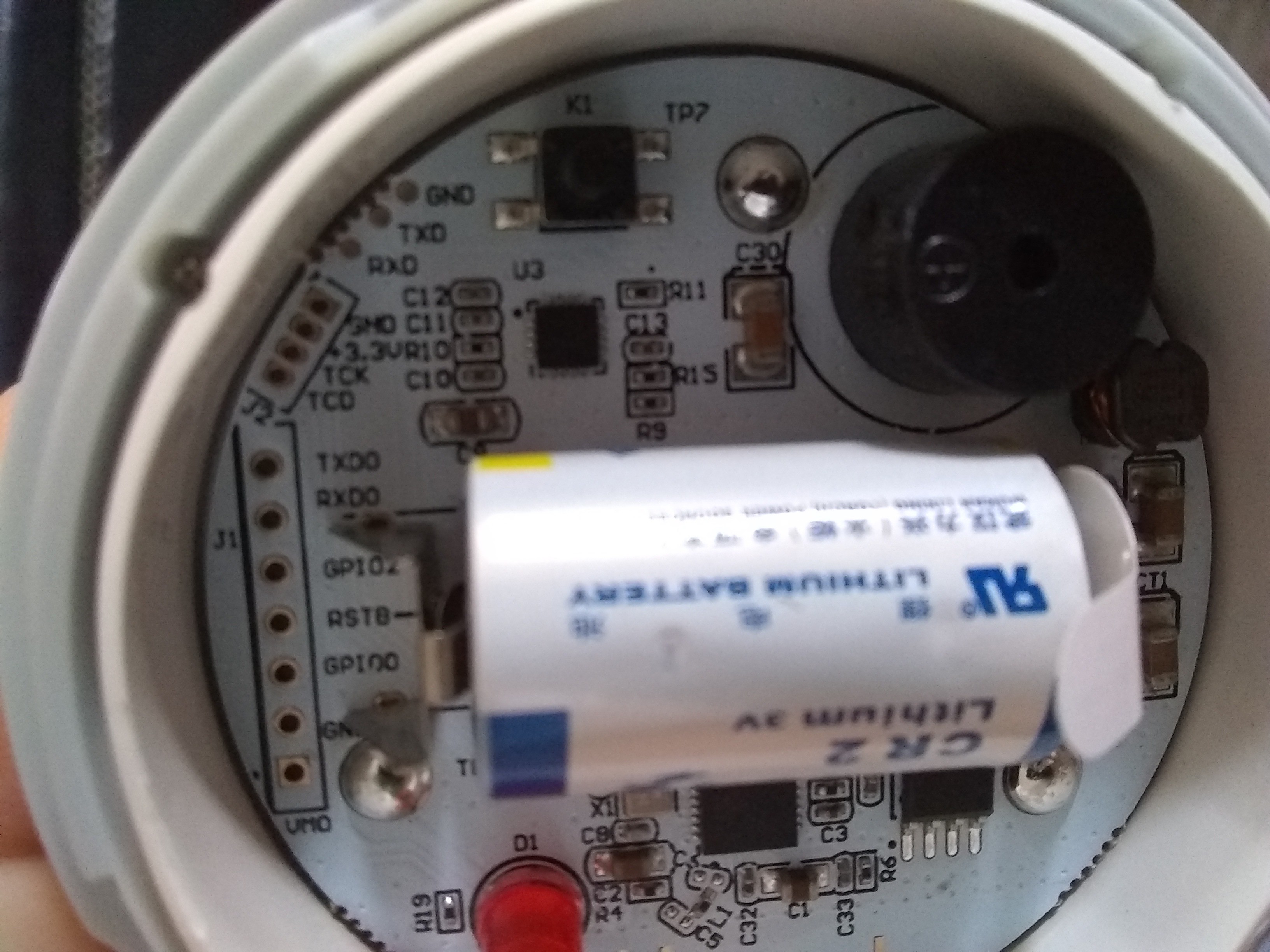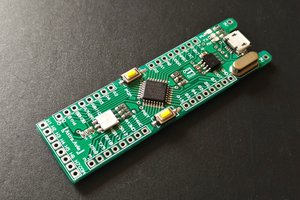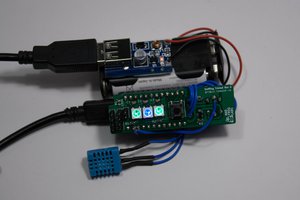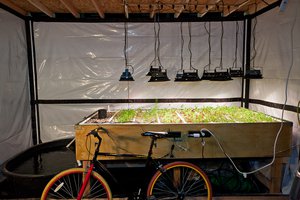The wireless controller is indeed a ESP8266EX, accompanied by a 8Mb PUYA P25Q80H flash chip. The sensor coprocessor is a SiLabs EFM8SB10F8GA Sleepy Bee 8051-clone from SiLabs.

There are two headers. J1 is a 7-pin header with the following pin labels (starting from the square pad as pin-1):
- VMO
- GND
- GPIO0
- RSTB
- GPIO2
- RXDO
- TXDO
That's an easy one. GPIOs 0 and 2 are commonly brought out from the ESP8266 to enable flashing mode. The only confusion I have is the terms RSTB and VMO on the silkscreen. RSTB is reset, obviously, but does the B signify active-low? And why VMO rather than VDD? I don't see any other +V reference on that header, so it must be supply voltage. The only use of VMO I found online was "External USB transceiver VMO output" for a PIC and a TI USB transceiver chip, neither of which are on this board.
J2 is a 4-pin header with the following labels:
- Gnd
- +3.3V
- TCK
- TCD
That sure looks like a programming header of some sort, with TCK being the clock and TCD being data. The EFM8 docs label those as C2CK and C2D, though. Hopefully, I won't need to mess with the EFM8 chip, though, and I can let it do its thing as designed.
The white soldermask makes following traces on the PCB hard, and it's soldered to the three pogo-pins molded into the bottom case. I'm leery of trying to desolder them lest I melt the case, and it's not likely that would help much anyway. I suspect it's a 2-layer board, if nothing else just to meet the price point. Through-hole components are limited to the LED, the Piezo buzzer, and the battery mounts.
Interestingly, it looks like MonoPrice is just rebranding the Wasserstein Smart WiFi Water Sensor as found at https://wasserstein-home.com/products/b078tg5nt2. Unfortunately, there's even less information online about that; plus it's a couple dollars more.
Next: see if I can dump the flash chip and figure out what the ESP8266 is doing..

 Tirdad sadri nejad
Tirdad sadri nejad


Sorry about the newbie question, but is there a way to flash tasmota on this , and if so, how should I go about doing it? I am able to do so on sonoff devices.